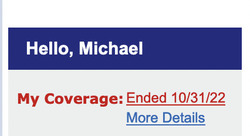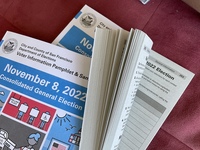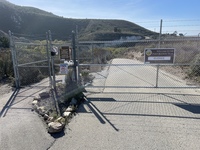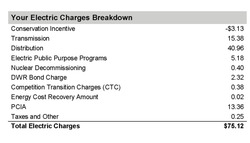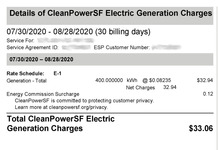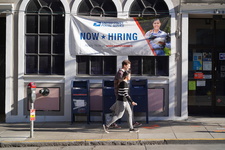 |
| Angelika/Mike Schilli |
|
|
Michael Well, nobody saw that coming: in October 2022 I decided to quit my job at Apple. Admittedly, the salary was astronomical, but the work was no longer fun for me, and I had hardly any time left for my always numerous bubbling ideas and private projects. So it was time for a reorientation.
How does that actually work, to resign from an American company, and what are the consequences? Of course, I had to think about all of this months in advance, after all, in America you are heavily dependent on your employer: They not only pay the lion's share of the exorbitantly expensive health insurance, but often also the bill for the mobile phone and are therefore the owner of the mobile number. Often the phone itself and the laptop belong to the company, and both have to be returned when leaving.
Especially critical is the health insurance, because it is strongly tied to the employer in the US. If you don't work anymore, you don't have health insurance either. That's obviously crazy, because there is no public health insurance in America that everyone can fall back on in the worst case scenario. So you are actually uninsured, and if you get sick, you have to pay everything out of your own pocket, which has already driven many people into ruin.
Michael Alas, people who are leaving their jobs do enjoy protection under the so-called COBRA law ("Consolidated Omnibus Budget Reconciliation Act", Rundbrief 11/2004) at the federal level, regardless of whether the employee or the employer terminated the employment. Cobra grants every employee the right to continue their health insurance, which they had through the company, for up to 18 months after leaving the job. The advantage: you get the same benefits and don't have to worry about being accepted into a private health insurance. The catch: you pay about 5 times as much as when you were still employed, since the company typically covers about 80% of the costs and only demands a contribution of 20% from the employee. In concrete numbers: an Apple employee pays about 380 dollars a month for health, dental and eye insurance (all separate in America), while a former employee pays a total of 1,600 dollars. Straight from your savings, without the possibility of deducting it later from taxes.
To continue your health insurance coverage under Cobra, one must traverse a obstacle course through the worst of American bureaucracy. Here, three different parties are involved: the employer, the Cobra administrator, and the health insurance company. It would be most sensible to give notice before leaving, in order to keep one's health insurance by paying for it out of pocket when you've left. However, this is not so simple, as the employer will immediately notify the health insurance company of the employee's departure, who will receive the message by regular mail a few days later. Which is when it will abruptly reject all incoming medical bills with a date after the end of the employment relationship.
By the way, many employers pay the contributions for a former employee until the end of the month they've left the company, which is why it is often advantageous to leave at the beginning of the month. Apple, however, stops health insurance coverage immediately at the end of the last working day. On that day, two letters are sent by mail, one to the Cobra administrator (a third party) and one to the health insurance. After receipt, the health insurance stops all payments as mentioned. The Cobra administrator, on the other hand, writes to the former employee, again by regular paper mail. In the letter, the former employee learns how to register for Cobra online with the Cobra administrator. If the former employee then pays the first monthly rate by direct debit, he is covered retroactively (!) since his departure from the company.
In my case, I had already known months in advance that I wanted to quit my job, and I had already thought about what would happen if I went to the doctor in the first two weeks after leaving the company. In this time frame, the health insurance does not consider the former employee as insured, and does not know anything about a possible Cobra extension. I only found vague statements online about this topic, but apparently no one had actually tried it. As luck would have it, both Angelika and I had scheduled doctor appointments shortly after Day X, and since I am naturally curious about what happens in borderline cases, we did not reschedule the appointments, but simply kept them. Now, to be fair, if these would have been sixfold bypass operation costing millions of dollars, I might have reconsidered, but it was only normal office visits, which can quickly cost 400 dollars in America, and I thought it was worth the risk, just for the benefit of having fun finding out what would happen.
On October 31st was my last day at work, and on November 1st Angelika had a dentist appointment. Interestingly, our insurance paid the bill without hesitation. However, the payment for my doctor's appointment a week later was rejected by the health insurance with the justification of "not insured" and the doctor sent the bill to me instead. I left it on my desk for the time being, and in the third week of November the Cobra documents arrived by US mail. I logged in online to the Cobra administrator's site and immediately paid the first bill for November by direct debit. This is highly unusual in America because everything is paid with a credit card, but it was the only option in this case. The website was very rustic, and I didn't receive any confirmation email. From some former colleagues I knew that the insurance coverage begins with the payment of the premium, retroactively. However, when I logged in to the health insurance's online portal the next day, it still said "not insured". You need nerves of steel for that. Two days later, my payment to the Cobra administrator cleared from my bank account, but the health insurance still apparently didn't know anything about my Cobra coverage. So the next day, I called the customer service of the health insurance and the lady in the call center even patched through to the Cobra administrator and finally told me after 20 minutes that I should wait another 24 hours and then my health insurance portal page would be updated.
And so it was. So I called the doctor the next day to clarify the matter with the invoice rejected by the health insurance. If you don't work, you have lots of time for things like these! I suggested to the billing lady to resubmit the invoice to the health insurance, for which the lady on the phone even found a menu option in their billing software. The whole thing would take 30-45 days, she said, I should ignore all incoming invoices and reminders in the meantime. Well, let's hope it works out! In case of emergency, you can of course also settle the invoice privately and later submit it to the health insurance for reimbursement, but that only creates unnecessary paperwork.
To sum it up, it would have been an extremely risky move to quit my job at my advanced age before Obamacare. After 18 months, Cobra runs out and the former employee has to find a private health insurance, which can be very expensive or even impossible with increasing age and various ailments. In 2010, Obama pushed through the "Affordable Care Act" (ACA) with Congress, among other things, that health insurance companies must accept everyone and are no longer allowed to charge higher premiums due to "pre-existing conditions". Since then, a reasonably decent health insurance (albeit with high deductibles) can be obtained for a two-person family for around $400 a month, and the state of California even provides additional support for low-income earners.
The phone number of my cell phone, which I also used privately, I was allowed to transfer to a newly established and paid for monthly mobile contract. In the employee shop I bought myself a new laptop. I had to give back the company laptop. I gradually cleared out my cubicle, now there is a bicycle and two skateboards at our home.
I'm currently enjoying my new found freedom, already in the second month. It's great that I now have the time to finally do tasks that have been postponed for years. Whether it's reupholstering the dining room chairs or fixing the tap of the sink that no longer closes properly, or making a few videos about cooking German recipes with American ingredients or finally writing our newsletter in peace: every day I tick off at least one task from a list of hundreds of entries. Let's see how this develops. And of course there's still time for surfing.
Angelika If you are an American citizen, you are allowed to participate in elections at the local, state, and federal levels. But how does it work exactly? The organization and execution of elections is in the hands of the individual states, with individual regulations. In almost all states, the eligible voter can only participate in the election if they have registered as a voter. Once our citizenship was finalized, we immediately registered to vote. In California, you can do this online, and Michael registered himself in the voter registry. He had to provide his name, date and place of birth, driver's license number, the last four digits of his social security number, and his address. A few weeks later, a card arrived in the mailbox with his voter number. At the time, I happened to have to renew my driver's license and I took care of the voter registration at the same time at the California DMV.
I was also sent the card with my number by regular mail. In California, voters must register at least 15 days before the election in order to participate. Once registered, this remains in effect and applies to all future elections, unless you move, change your name or your party preference (more on that later). Then you register again.
Eligible American voters who move from another state to California must also register to vote in California. If the eligible voter misses the deadline, they still have the option to go to their polling place on election day and vote. The vote will then be considered provisional until it is checked to see if the voter is eligible to vote in California.
When registering to vote, you are asked which party you identify with. The following are available to choose from: the Democratic or Republican Party, the Green Party, the Peace and Freedom Party, the "Libertarian" Party, and the "American Independent Party". In California, however, one can also check that you do not identify with any party. Note that registering with a party does not commit one to voting for it, but it may be relevant in different primaries: for example, those who register as affiliated with the Democratic Party can participate in its primaries to vote for the candidate the Democratic Party will send to the race. The same applies to Republicans.
Since the pandemic, California authorities have been automatically sending registered voters mail-in ballots. Everyone can therefore fill out the ballots in peace at home. Of course, there is still the option of going to the polling station on election day. If the voter opts for mail-in voting, the ballots are placed in a designated envelope. The envelope is sealed and signed on the outside. The signature serves as verification that the voter is the right person. Before the count, the signature on the envelope is compared with the one on the California driver's license of the voter. The voter gives his consent for this when registering to vote. The completed mail-in ballots can either be sent by post or placed in special ballot boxes, which look like mailboxes and are distributed throughout the city. We used one such box and threw our documents into it in our district. Interestingly, you can then track online where your ballot is and whether and when it was counted.
The voter turnout in the US is often low (on average a bit over 60% for presidential elections and about 50% for congressional elections). Since I'm allowed to vote here myself, I honestly don't find that surprising anymore. First of all, there's the aforementioned mandatory registration, which is quick but doesn't happen automatically. Then Michael and I spent an honest hour filling out our ballots in the last elections in November, because we were not only called upon to cast our vote for the congressional candidates, but also to vote on dozens of referendums. Thank God we were able to do this at our dining table at home and didn't have to stand in a voting booth.
In California, these referendums have become so widespread that the voter has to work through meters-long ballots and there are always some new referendums coming up. Even though we have only had our American citizenship since February 2022 and are thus eligible to vote, we have already participated in three elections in this time frame. In November, we had a whopping five ballots to work through, printed on double sided paper. We are both certainly not uninformed, quite the contrary, but for many things we were asked to decide on, one would have had to study the matter for weeks in order to make an sound decision. Then we asked ourselves what the politicians were actually doing in California, because after all, you elect a suitable representative for doing exactly this kind of work. We did receive information material in the form of a telephone book-thick volume, but that wasn't really helpful, as it lacks neutrality.
Every ballot initiative ("Proposition") lists pros and cons, but anyone can write and submit these documents in San Francisco, and they often come across as manipulative. Then there are associations and organizations as well as politicians who sponsor certain ballot initiatives and give their names to them. That's why so many pamphlets landed in our mailbox at home before the elections. A waste of paper like no other.
In San Francisco, there is the relatively new politically motivated association GrowSF.org, which, for example, publishes a voter guide that is quite useful. Sachin Agarwal founded GrowSF in 2020 with the goal of finding political solutions for San Francisco based on pragmatism and common sense. In general, it is simply impossible for voters to know all the facts. I can understand why some people are frustrated with the ballot paper chaos. This should be urgently reformed.
Michael At the end of November, we took a week of vacation and drove down to Cayucos near San Luis Obispo. We stayed in an AirBnb, and I got to go surfing. We also did a lot of hiking and one day stumbled upon a path that presented some surprisingly high bureaucratic hurdles: First, we tried to get to the coastal landscape from the south side via Avila Beach, but were informed that the path went through private property of the California energy producer PG&E, so we couldn't just park at the entrance and then hike, but would have had to take a tour bus onto the property and then follow a company-owned tour guide. Instead, we tried it from the north side. There we encountered a locked gate with a sign that said that PG&E allows up to 250 hikers on the trail on all days except Tuesdays and Wednesdays. Since it was Wednesday, and Thursday was a holiday, we came back on Friday morning and were allowed in and proceed to a hut.
There, we had to read a printout, which said that we had no liability claims against PG&E, and then we were allowed to register ourselves on a list to wander off. The path went along the coast, where huge waves rattled against steep sea walls and rock formations, producing lots of foam. Thousands of breeding birds gathered on rocks in the water. In the air there was a hint of bird droppings and horse manure, because apparently horse enthusiasts also ride on this path.
After about five kilometers we came across a farm with a small herd of cows on a grass field, marched through it, and the beautiful path abruptly came to an end. That is to say, we could have gone much further, but there were signs everywhere indicating that the paths were private roads of the ranch, whose entry was prohibited. And we couldn't believe our eyes: We saw two dome-shaped domes in the distance, and a sign indicated that these were the cooling towers of the nuclear power plant "Diablo Canyon" located in a uniquely picturesque landscape.
Further research revealed that the Diablo Canyon Nuclear Power Plant first went online in 1987 and has supplied about 8.6% of California's electricity to date. Although there were some concerns about the approval of the construction due to its location in an earthquake-prone area and right on the Pacific coast, which could expose it to incoming tsunami waves. Allegedly, however, PG&E will shut down the reactors in 2024/2025 because the operation is no longer profitable due to state regulations and California is focusing on green energy. Here you can learn something new!
Michael You in Germany have been taken pretty much to task lately when it comes to household costs for electricity and gas. Let's compare: How much do citizens in America pay for energy supply for their private households? To make a long story short, we paid 108 dollars for 400 kilowatt hours in September, that's about 27 cents per kilowatt hour. But, as you can imagine, electricity prices vary greatly by state, our informant in Florida recently told us that he paid only 133 dollars for 811 kWh there, almost half, 14 cents per kWh.
As already discussed in a previous issue (Rundbrief 05/2017), our electricity in the San Francisco Bay Area comes from a private company called PG&E, or "Pacific Gas and Electric", which has a monopoly on electricity within several hundred kilometers. Now PG&E is a pretty shady company that keeps slipping from one crisis to another. Their power lines spark and cause forest fires, and so PG&E sometimes just shuts off the power in rural areas with lots of trees during the summer. PG&E runs such outdated and totally dilapidated infrastructure that it can't meet the energy needs of the Bay Area. When everyone turns on their appliances, it all collapses. This is evident in the summer when the residents of the hot Silicon Valley cool their apartments with air conditioners all day. The supply breaks down and entire districts remain without electricity for days. As a precaution, PG&E simply turns off the electricity in some cities in the Silicon Valley in rotation with so-called "Rotating Outages". Just imagine, someone lives right next to the historic spot where the iPhone was invented and has no electricity for days, like in the third world. Of course, able bodied citizens like ourselves can live without air conditioning for a few days, but when the food in the refrigerator and freezer starts rotting, the fun is over.
PG&E encourages people to use less electricity so that the capacity for both large and small consumers is sufficient. As possibly the only private company in the world, PG&E even advertises for consumers to buy less of their product, electricity! For this reason, they introduced tiered pricing. Those who consume more than the average pay higher kilowatt prices. We consume slightly more than the average household and have made a deal that the electricity mix comes partly from renewable energy and we pay, on average, about 27 cents per kilowatt hour. How does this break down exactly?
In Figure 20 you can see that we have consumed exactly 400 kWh in the example month, of which the electricity delivery (Delivery) for the first 225 kWh costs 24 cents/kWh and the remaining 175 kWh costs 30 cents/kWh. PG&E then deducts the "Generation Credit" of 47.01 dollars, but adds the "Power Charge Indifference Adjustment" and 25 cents "Franchise Fee Surcharge". The table "Your Electric Charges Breakdown" (Figure 21) tries to explain how these 75.12 dollars are composed, with all kinds of individual items that nobody understands. You also might be rightfully scratching your head over the fact that the amount was previously determined per kWh and here there are just fixed costs. Later, the generation fee ("Generation Charge") is added, which amounts to 32.94 dollars with 400 kWh (Figure 22). Less the previously deducted "Generation Credit", mind you. In short: Nobody understands how the costs are composed, you just pay what is printed on the bill.
We pay the monthly electricity bill not by direct debit, but traditionally by hand. Until a few years ago, Angelika opened the paper bill sent to us by PG&E by post, took out the checkbook and issued a check for the required amount, signed it, and sent it to PG&E in an envelope by post. At some point I found out that you can also transfer the amount by mobile app, and since then I have been responsible for doing this diligently every month.
Since electricity apparently is not just any commodity, but a necessity without which nobody can live, PG&E does not simply cut off the electricity if one fails to pay a bill. I found this out by accident, because at one time when I paid the bill, I made a mistake and only paid the "Delivery Charges" instead of the higher total amount. The lights stayed on! A month later, the next bill arrived and the missing amount had been added without comment. Muttering apologies under my breath, I paid as requested.
Lately, the cost of electricity at our place even varies according to the time of day. According to the Table of the electricity provider, we pay higher kilowatt prices between 4:00 pm and 9:00 pm than during the rest of the day. That is probably the time window when many people in San Francisco turn on the stove to cook dinner. If you want to save, you have to wait after 9:00 pm or to cook charge the Tesla!
Michael It is well known that I do not shy away from any dish in the world, so it was only a matter of time before I had to try durian, the famous and infamous stinky fruit from Malaysia. My colleagues had been raving for years about the complex flavor journey that this fruit takes through the palate, and that American and European wimps could never get past the unappetizing smell. Of course, this was ridiculous - I try everything.
Yes, you read that right, there are actually fruits in this world that smell unappetizing yet taste good. Anyone who has ever had a fine wine knows that the nose and palate can sometimes give contradictory judgments. This phenomenon is particularly pronounced with the durian fruit, which smells like onion scraps left in the trash can that has been forgotten for two days. Not exactly appetizing, but certainly not as vomit-inducing as many Youtube videos suggest, showing American tourists in theatrical poses on Malaysian fruit markets.
It happened that one day our megasupermarket Costco offered already extracted and frozen durian pulp for a bargain price of 27 dollars per 400g. Of course I had to pull the trigger on that deal. Bravely, I tried the freshly thawed mango-like pieces lying in the package. Of course, you have to ignore the smell of rotting onions, and you can't keep the fruit in the refrigerator without stinking up the whole apartment, even through double plastic bags the stench finds its way. The taste is ... interesting. Certainly mango-like, but also nutty, and also with a gasoline-like flavor, so you don't know if it really harmonizes with the digestive tract. And indeed, I tossed and turned a bit after consuming the fruit at night. Angelika also tried a piece, but she was remarkably restrained when it came to a second helping. Conclusion: You should try it, but honestly, I prefer a good ripe mango.
Angelika The American postal service often has to endure harsh criticism. The company's deficit is huge and customer service, as expected from a bureaucracy, is often slow and hasn't gone with the times. But before Christmas we were pleasantly surprised, because several post offices in San Francisco opened their counters on Sunday mornings before Christmas, so that customers could send their Christmas packages. I used this service twice and was amazed at how many people knew about it, even though it was hardly publicized. Customers were enthusiastic and full of praise.
Angelika I have been part of a photography collective in San Francisco for decades. A highlight is always when we organize a group exhibition. This year in October it was time again. I showed two of my collages. The theme of the exhibition was "The New World". Sandra Phillips, who had worked for years as a curator in the photography department of the San Francisco Museum of Modern Art, chose the theme and put together a show from our works. The theme was how the world has changed through Covid. The show was on display from October 22 to November 19 at a gallery of the "Minnesota Street Projects", a conglomerate of various galleries under one roof, located in the so-called "Dogpatch" district in San Francisco. I designed my collages by cutting apart old photos I had taken previously and putting them back together.
Greetings from San Francisco
Angelika and Michael




